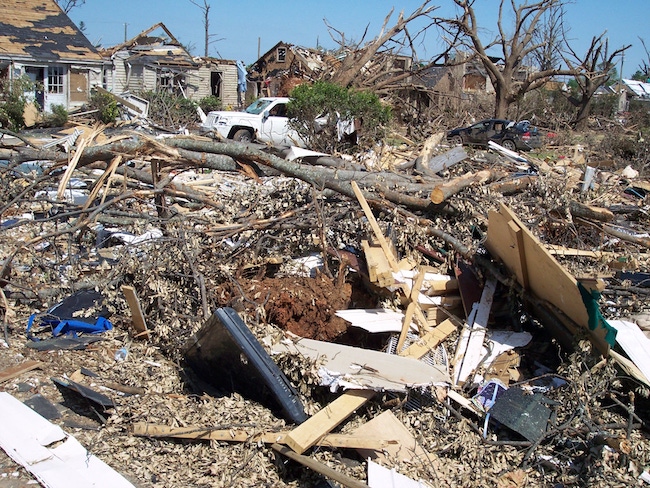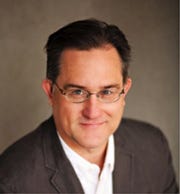Like many of us, I followed the news of Hurricane Harvey and Hurricane Irma. I was deeply touched by the devastation that occurred. I was also stunned by the response of the plastics industry, especially in the state of Texas.
September 19, 2017

Like many of us, I followed the news of Hurricane Harvey and Hurricane Irma. Both of these were Category 4 hurricanes, and they made landfall just days apart from each other, both in densely populated areas. I was deeply touched by the devastation that occurred. I was also stunned by the response of the plastics industry, especially in the state of Texas.
As an example, there was a story about the Arkema chemical plant, located in a small town named Crosby, TX. Crosby is about 20 miles northeast of Houston, in Harris County. Harris County is the most populous county in Texas, with a population of more than four million people.
This specific Arkema plant produces peroxides, which are used as feedstock by a variety of plastics processors. The plant uses a number of chemicals as raw materials, including isobutylene and sulphur dioxide. While highly flammable, isobutylene is a widely used intermediate. According to a story in the Wall Street Journal, in 2014 the company reported that only 25 people living within 0.4 miles of the plant would be at risk from isobutylene in the event of a fire. The report went on to describe how safe the local residents were from any danger.
However, on Aug. 31, 2017, a few days after Hurricane Harvey made landfall, there was some disturbing news. According to ABC News, there were a number of explosions at the plant, and black smoke was seen rising from the facility. Local officials said there was no need for concern. Harris County Sheriff Ed Gonzalez likened the smoke emanating from the facility to "standing over a barbecue pit or something like that, when you get smoke in your eyes."
On Sept. 3, the Wall Street Journal reported that Arkema would take additional “proactive measures.” However, neither the company nor local officials would provide any details.
To paraphrase Arkema President and CEO Rich Rowe, “We lost power, and as a result we can’t keep anything cool. So, we decided to just let the stuff explode.” When asked about who should bear responsibility for this event, Rowe responded, “Hey, don’t blame us, it’s not our fault. We followed all of the regulations required by the state of Texas. What else do you expect us to do?” (The comments and paraphrasing are the work of the author, based on a variety of sources. I should add that I may have been born in the city, but I can smell bullshit a mile away).
I am sure you have all seen the press conference that was jointly hosted by the Texas Commission on Environmental Quality, the Environmental Protection Agency and the Society of the Plastics Industry, ensuring all of us that the situation was under control, that there was nothing to worry about and we should all go back to sleep.
[Author’s note: Just kidding. There was no such press conference. Although, in all fairness, I must say that on Sept. 7, I did get an e-mail from William Carteaux, President and CEO of the Plastics Industry Association, where he described his excitement and enthusiam for the global plastics industry, and extended his personal invitation for me to attend NPE 2018 in Orlando, FL.]
Meanwhile, in Florida . . .
I was also touched by stories that came out of Florida. Many of those stories involved the people who evacuated ahead of the storm, a mass migration of millions of people. Unlike Texas, most Florida residents had several days' advance notice to prepare. They could choose to evacuate, or they could band together and hunker down.
I came across a story about how Disney shut down and secured things at its Orlando properties. They were simple things, but well thought out: Mesh bags placed around the glass of outdoor lights, banners and signs taken down, picnic tables turned upside down, trash bins filled with water and secured to support structures with cable ties, kiosks protected with plastic wrap, etc. On top of that, utility trucks and equipment were parked on site . . . before the storm even hit.
I have to say, this was one of the most impressive acts of responsible design that I have ever seen. I doubt that it will get much attention, or that people will even remember it, but it was impressive.
We are all connected
Truth be told, I don’t have a personal connection to Texas. I’ve been to Dallas a few times, mostly for business, but I didn't get to see much outside of the hotels where I stayed. I did spend a weekend in Austin a few years ago, at the tail end of a business trip. I had a chance to see a bit of the city, enjoy some local cuisine and listen to some music.
On the other hand, I do have a personal connection to Florida. Not because I have visited the state, but because I know a lot people who live there. There is my brother Curt, who lives in Clearwater, along with my two nephews. There is my cousin Diane, who lives in Tampa, with her kids. Growing up, we used to fight tooth and nail. Today we laugh about that, and I feel we know each other. (To paraphrase the old saying, “You do not truly know someone until you fight them.”)
Then there is my friend Cheryl from high school. Her sister Sandy dated my brother Kevin. And my buddy Neil, another friend from high school. We were co-captains on the track team. I haven’t seen him in decades, but I still remember his laugh.
Still, I would propose that both of these states represent our connection to the past, and to the future. Texas, the second most populous state, home of the Alamo and the Johnson Space Center. Often referred to as the Lone Star state, the name itself is based on the word tejas, meaning friends.
Florida, the third most populous state, the mythical location of the Fountain of Youth and the home of the Kennedy Space Center. Florida, the land of flowers. Both of these states are multi-lingual and multi-cultural. In many ways, Texas and Florida represent America.
I have lived through a couple of natural disasters, including horrific wildfires in Southern California, and torrential rains in Big Sur. I also participated in the cleanup after an F5 tornado touched down in Tuscaloosa, AL, less than a block from the home of my stepsister.
|
Eric Larson participated in the cleanup of Tuscaloosa, AL, which was devastated by an F5 tornado in May 2011. He took this picture at the time. |
I can still hear the sounds. The whine of machinery and generators, the thump-thump-thump of helicopters flying low overhead, the staccato and static of radio communications I wasn’t supposed to hear. It is almost beyond comprehension.
I remember the exhaustion, confusion and mind-numbing chaos. Can I see some identification please? ”Sorry, no, I don’t have any, but my stepsister lives in that house right there.” I also remember the hugs and the tears.
What role does plastic play in all of this?
Many years ago, when I became certified as a professional engineer, I took an oath that I would “hold paramount the safety health, and welfare of the public.” At the time, I didn’t fully understand what was involved, but it was something I believed in. Today, I believe in that oath more than ever.
As an engineer, I’m not involved in highway design, building construction or HVAC (heating, ventilating and air conditioning). But I do get involved in the design of handheld products, including some that could be useful in a disaster. Most of the products I work on are mass produced, and almost all of them are made from plastics.
If you are reading this, you are probably involved in the plastics industry. I have high regard for the people who work in this industry, from the resin producers, distributors, compounders, molders and processors (aka the melters) to the recyclers, re-processors, re-sellers and re-users of this incredible material we call plastic.
That said, I do have a couple of questions I would like to run by you.
Is a lighter made of acetal better than a piece of flint and a hard rock?
Is a cooler made from expanded polystyrene foam (aka Styrofoam) better than one made from wet moss and banana leaves?
Is a blowmolded PET water bottle better than one made from glass?
If an explosion at a plastics processing plant killed all of the local residents, would anybody hear it?

Eric R. Larson is a mechanical engineer with over 30 years' experience in plastics design. He has helped develop products ranging from boogie boards, water basketball games and SCUBA diving equipment to disposable lighters, cell phones and handheld medical devices.
Larson is owner of the Art of Mass Production (AMP), an engineering consulting company based in San Diego, CA. AMP provides services to manufacturing companies in the consumer electronics, wireless, and medical device industries.
Larson is also moderator of the blog site, plasticsguy.com, where he writes about plastics technology and its effect on people and the planet. His newest book, Plastics Materials Selection: A Practical Guide, can be purchased through his website.
About the Author(s)
You May Also Like



